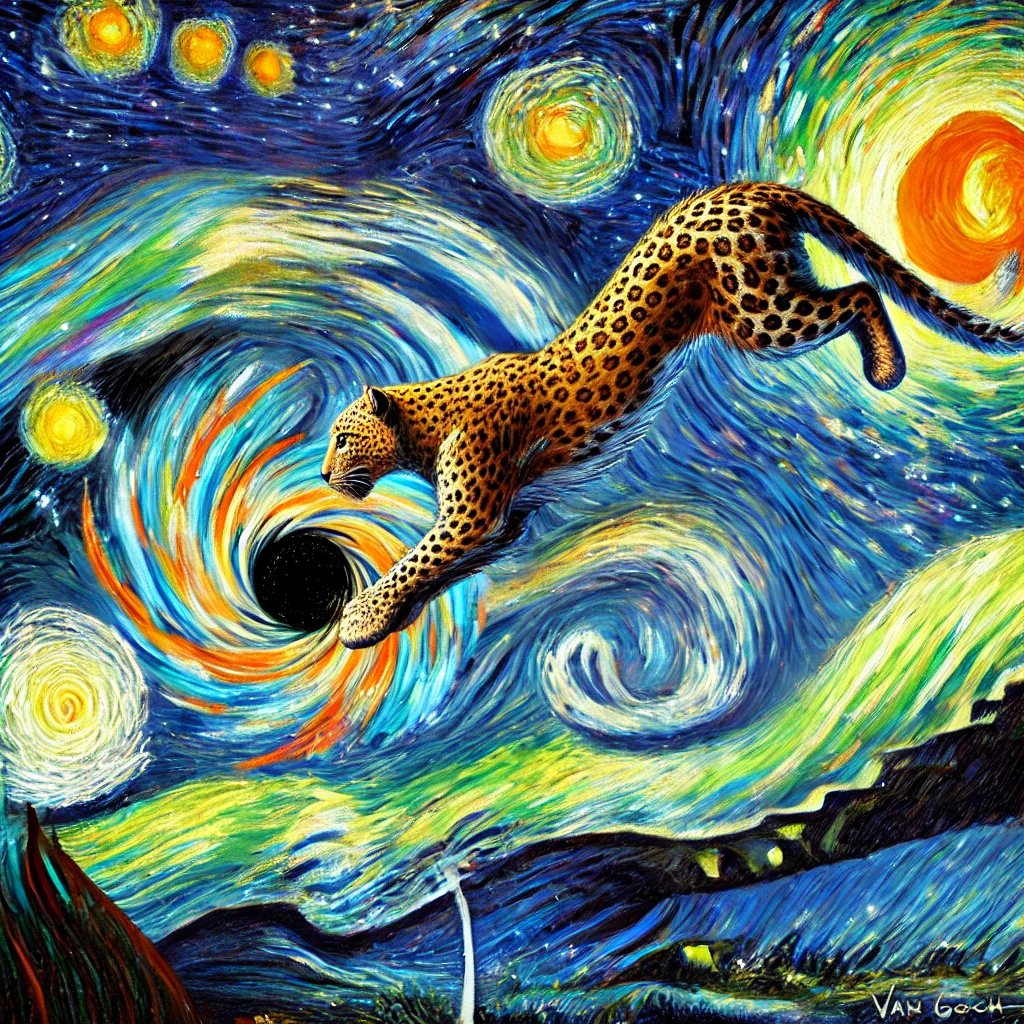In just a couple of years, we’ve witnessed the emergence of AI, or Artificial Intelligence, as an almost ubiquitous aspect of our society. From art to music to fitness to kitchen utensils, it’s everywhere. In many ways, AI has achieved everything that “crypto” aspired to be: a transcendent force with the potential to reshape the contours of our daily existence.
Unlike crypto, however, AI is relatively easy to understand, even easier to interact with. Still, AI technology is not without controversy. Left unregulated, it has the potential to make Facebook’s data and privacy issues look like a mere preamble to an uncontrolled hellscape. Although the hellscape isn’t likely to look like Terminator, where the machines take over, it could be a world where we are unable to believe our eyes and ears. Unchecked, it has the potential to erode the foundations of truth and leave us in a world where deciphering fact from fiction will be an arduous task. It’s a different kind of dystopia but a dystopia nonetheless.
But alas, this article is not going to focus on the potential perils of AI; rather, we are going to examine AI art, its growth in prominence, and the controversy surrounding it. Is it theft? Is it art? Who deserves the credit as the artist? Is it morally objectionable to use at this stage of its existence?
What is AI?
AI has been a part of the lexicon for decades, whether in pop culture, science, or science fiction. In the real world, AI is a branch of computer science that aims to create intelligent machines capable of performing tasks that typically require human intelligence. After decades of slow and steady growth, the field of AI has exploded in recent years with the emergence of ChatGPT, DALL-E, and Midjourney, the latter two being AI art models. A large part of the explosion has been due to the fact that, through these programs, we were able to witness in real-time machines performing tasks and communicating in ways that truly seem human.
How Does Modern AI Work?
At its core, AI operates on the principles of machine learning. Machine learning uses algorithms and statistical models to allow computers to learn without explicit programming. While there are several different approaches, they all rely on feeding a computer system enormous amounts of data and allowing that system to identify patterns, trends, and relationships. Eventually, this system can make decisions or choices with new and unseen data. The applications are endless, from speech recognition to healthcare to navigation, the technology can truly be world-changing, and we’re really only witnesing its infancy.
How Does AI Art Work?
AI in art involves a process where machines learn to create by employing algorithms and neural networks. This process begins by feeding vast amounts of data into the AI system, exposing it to a variety of artistic styles, compositions, and themes. This information is shared as image-text pairs. The algorithm then analyzes this data, identifies patterns and relationships that define different aspects of art, such as color palettes, brush strokes, and visual compositions.
Following this initial phase, the AI model enters a training stage where it refines its understanding of artistic elements. The system learns to associate specific inputs (text) with desired outputs (the image). Eventually, the system is able to produce novel and completely original artwork simply based on a single prompt.
The Rise of the Prompt Creator
Anyone who uses an AI system like Midjourney or ChatGPT is a prompt creator or prompt generator. The prompt creator inputs a prompt into an AI system with the expectation of some kind of desired output. For instance, if I’m looking for an image of a leopard diving into a black hole in the style of Van Gogh, I can type that prompt into Dall-E, and it will produce something based on my prompt. Anyone who has used a system like this learns very quickly that writing prompts is a skill unto itself. It creates an interesting and somewhat circular environment where the AI system is learning to create the correct output while the user is learning how to create the right input. Prompt generation has become its own cottage industry, with “experts” popping up sharing and/or selling tips on how to best communicate with a particular AI system.

Moral Quandaries
There are several valid and important moral questions surrounding AI art. While this article will not dive deep into these questions, it is important to lay these questions out:
- Authorship and Ownership: Who should be credited as the artist or creator? Is it the prompt creator? Is it the designer of the AI system? Is it the owner of the AI system? Or is it the AI itself? How is intellectual property determined?
- Bias and Representation: How do we ensure that AI-generated art does not perpetuate biases or stereotypes present in the data it learns from? What ethical considerations should be taken to prevent the reinforcement of harmful societal norms through AI-generated artworks?
- Commercialization and Compensation: Who owns the work? What ethical framework will we use to determine appropriate compensation?
- Transparency and Accountability: How can we ensure transparency in the creation process of AI-generated art? What mechanisms should be in place to hold creators and developers of AI art accountable for the ethical implications of their creations.
Is It Art?
The question of whether AI-generated images can be considered “art” is complex and multifaceted. Traditional definitions of art often emphasize the human touch, creativity, and emotional expression. Critics argue that AI-generated art lacks the emotional depth and authenticity that comes from a human artist’s personal experiences and feelings.
Others argue that AI art is simply an evolution of artistic tools and techniques. Just as photography was once debated and eventually accepted as an art form, AI-generated art may follow a similar trajectory. AI can create unique and innovative work, and the possibility exists that there will come a time when we, as a society, hold it in high regard.
Are AI Artists Really Artists?
A huge debate has emerged in creative communities recently, centered around the role of the prompt generator, the individual inputting detailed prompts into the AI system. Many prompt creators refer to themselves as “AI artists,” much to the ire of people within the creative community.
Many prompt creators argue that they are artists because they engage in a creative process requiring skill and vision. While AI image generators are easy to use, getting a specific and desired output does require an understanding of language, aesthetics, and the capabilities of the AI. They argue that the process is similar to that of a director guiding actors or a photographer capturing a scene. They argue that the ability to develop and refine prompts to achieve a desired outcome is a legitimate form of artistic expression.
Critics, however, argue that true artistry must involve more of a direct, hands-on approach to creating art. They contend that since the AI is performing the actual creation, based on pre-existing data, the prompt generator is merely facilitating a process rather than actively engaging in it. To these critics, the lack of required skill, combined with the absence of a personal touch in the creative process, means that a prompt generator cannot be equated with a traditional artist.
This divide underscores a broader philosophical question about the nature of creativity and what it means to be an artist. These are questions that don’t currently have a satisfactory, consensus answer.
Conclusion
The role of technology in art has long been a contentious topic. To some, it bastardizes art, while to others, it allows us to augment it and take it to places once thought unimaginable. Personally, I’ve always found it off-putting when a prompt generator refers to themselves as an artist. As a comic writer, I engage in a form of prompt generation myself in that I write panel descriptions which an artist will take and create art from. In essence, I’m a prompt creator but for humans. Personally, I would never consider myself an artist simply because I gave an artist an idea. While I might be nudging an artist in a particular direction, they put far too much work into creating the artwork for me to equate myself to them.
And perhaps that is the crux of the issue. Prompt generation might be a form of artistic expression, but it’s the fact that some hold themselves in the same regard as traditional artists that is so off-putting. This, combined with the fact that AI art is a serious threat to the livelihood of traditional artists, makes for a contentious debate. Traditional artists spend years honing their craft, and AI art, while impressive, lacks that personal effort. To an extent, much of this discussion comes down to semantics and where we draw the lines of artistic expression. There is still much to be uncovered in this evolving field, and as we navigate it, let’s try to be respectful and understanding.
Are prompt generators artists? What do you think? The best responses will be included in next months newsletter.
